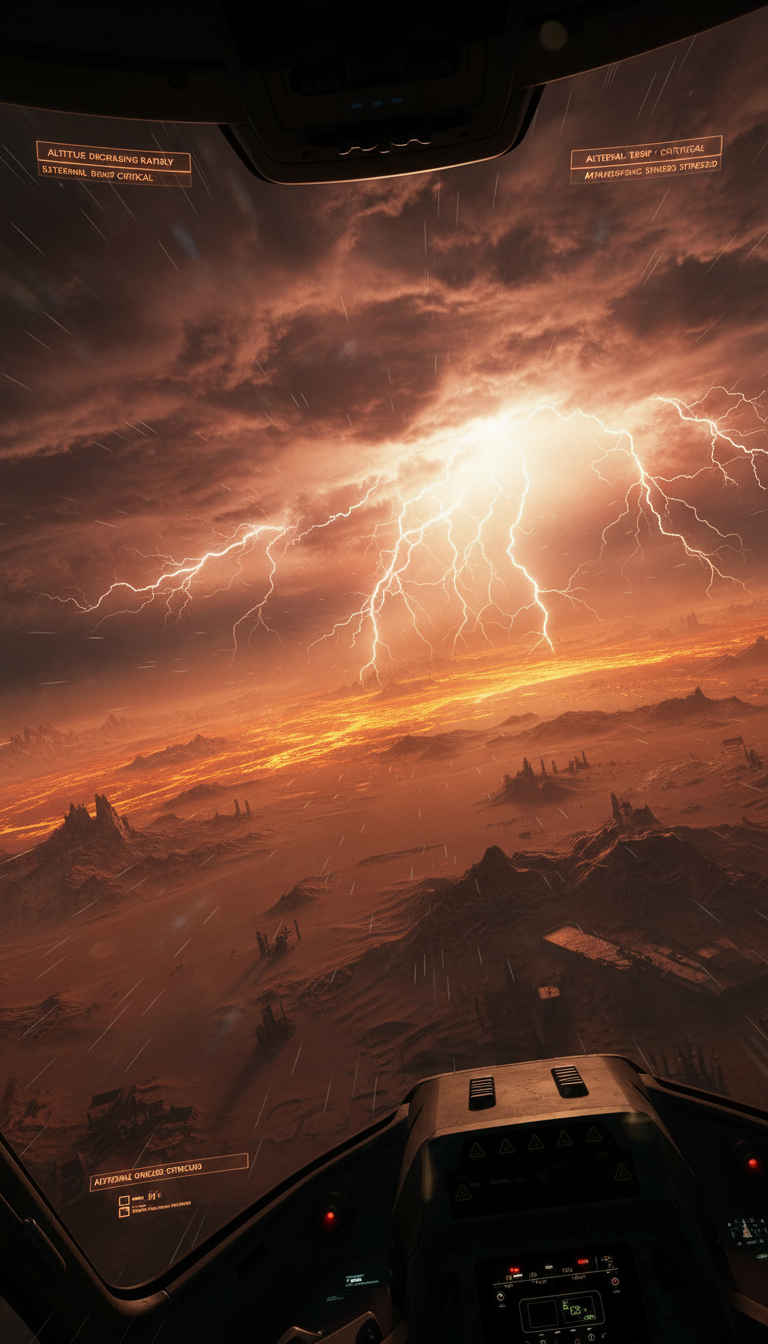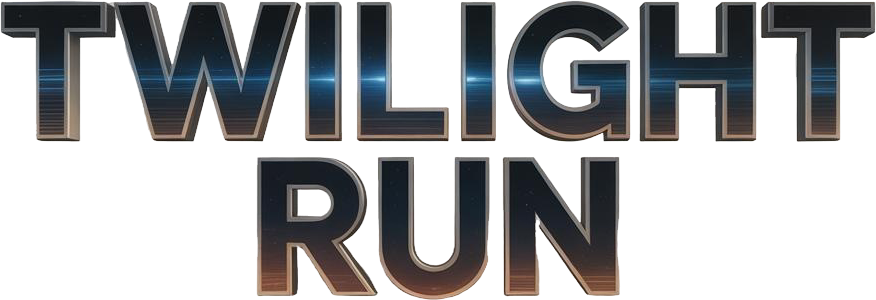Hellscape

The world of Pittman has many names among the Terran forces, but none more fitting than “Hellscape.” From orbit, it appears peaceful — a golden brown sphere wrapped in storm belts and dust veils — but that serenity vanishes the moment you breach the atmosphere. The descent alone is an ordeal. The upper layers churn with violent winds that tear through anything unshielded. Lightning flashes so frequently that it paints the sky in bursts of orange and white.
I arrived at Pittman as part of the 38th MDF Recovery Division, assigned to assist an evacuation effort that had gone wrong. The planet had been declared uninhabitable decades earlier, yet people — desperate settlers, old miners, and refugees — still clung to the wastelands. The atmosphere eats away at anything left exposed for too long, and the heat from the equatorial regions melts the sand into glass.
Our drop pods screamed through the clouds, the hulls glowing as friction fire licked across the plating. Below us, the surface stretched out in a mosaic of rust-red dunes and blackened craters. Massive dust storms wandered across the landscape like living things, reshaping the horizon every hour.
When we landed, the first thing I noticed was the silence beneath the wind — that deep, pressing quiet that makes you feel small. The air smelled of iron and ozone. The ground was unstable, shifting under every step. Our suits’ environmental systems fought constantly against the atmosphere, filters clogging with grit and servos straining from heat stress.
We found the remnants of a settlement half-buried beneath fused glass. The colony domes had melted long ago, their metal skeletons twisted into arches like the ribs of some ancient beast. Inside one of the habitation shells, I found personal items: a toy shuttle, a cracked family photo, and a journal melted into slag. Everything left behind felt like a whisper from people who refused to surrender to a dying world.
Further inland, we reached the evacuation site. A single transport — or what was left of it — lay broken in a crater, surrounded by the remains of automated loaders and collapsed shelters. It was as if the storm had frozen time mid-catastrophe. The evac beacon still pulsed weakly, sending out a message from a crew long dead.
We stayed for three days. Each night, the horizon burned with electrical fire as dust storms rolled in from the north. Our base shook beneath the force of the winds, the ground trembling as though it were alive. I barely slept — the noise, the heat, and the constant sense that something ancient was buried beneath the desert, waiting.
On the final day, one of our sensor drones detected movement near the crater’s edge. I went out with two engineers to investigate. What we found was not human.
It was a machine — or what used to be. A humanoid frame, corroded and half-buried, its metal blackened and scarred. No identification marks. The Omnium claimed they never deployed ground units here, and the MDF logs said the same. But it moved — just slightly — like a reflex from a body refusing to die. We brought its head back for analysis.
When we departed, I looked down from orbit one last time. The storms were still moving, slow and deliberate, erasing every trace of our presence. Pittman was not just a planet; it was a graveyard of people, machines, and ambition.
Sometimes I still dream of the lightning, of dunes glowing under storm fire, and of that machine’s dim blue eye staring back through the dust.
— Lt. A. R. Casden, MDF Recovery Division
